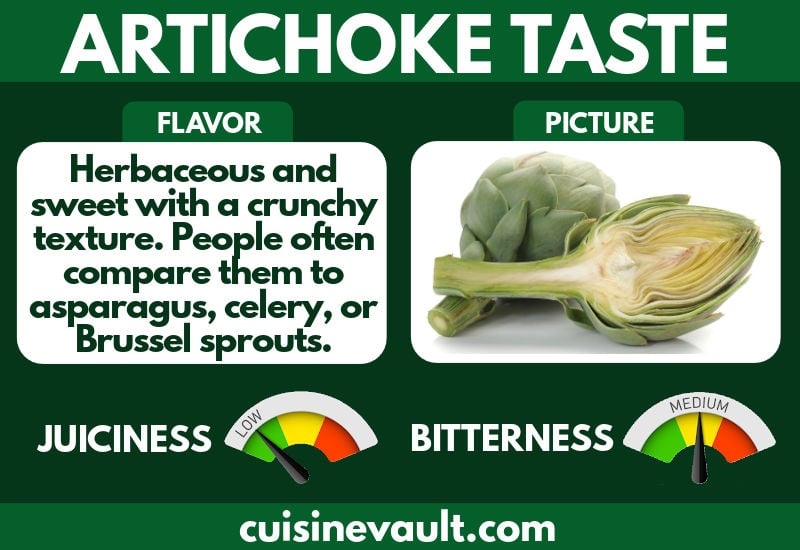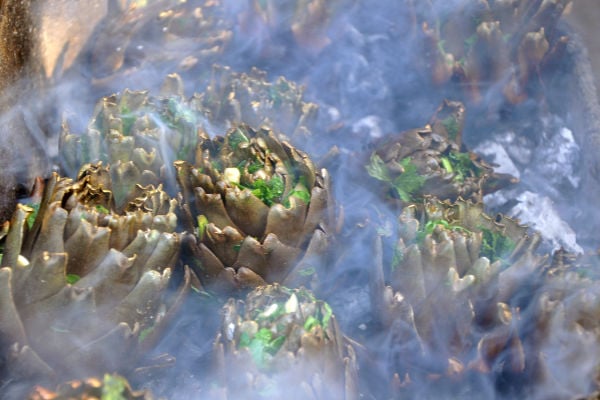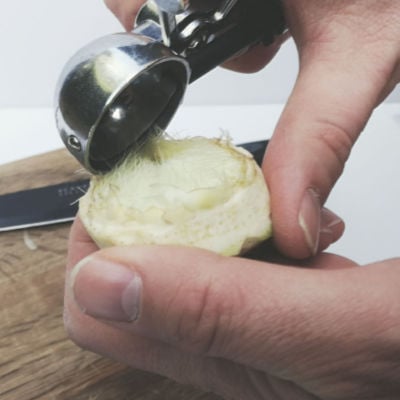The artichoke is a peculiar-looking vegetable that you’ll find in the vegetable aisle of the grocery store. If you’re wondering what artichokes taste like then keep reading. You’ll discover if they’re worth serving up for dinner as well as how their flavor changes depending on the cooking method.

Table of Contents
What does an artichoke taste like?
The flavor of an artichoke is a combination of herbaceous, sweet, and bitter with a crunchy texture. People often compare them to asparagus, celery, or Brussel sprouts. Artichoke hearts are the prized part of the vegetable, offering a similar taste to the petals, with a softer consistency.
While fresh artichokes are slightly crispy, once marinated in jars of oil, they are much softer and easily fall apart.

Does cooking an artichoke impact flavor?
The method of cooking an artichoke will impact its flavor and texture. Raw bracts develop during cooking, so we've listed some of the common options for serving artichoke below.
Raw

Raw artichokes are edible, but most people prefer them cooked. While there are additional nutritional benefits from eating them raw, you’ll also find their flavor will be stronger with increased bitterness. Cooking also softens the vegetable’s fibers, resulting in a texture that’s easier to chew.
Not sure how to serve raw artichokes? A good option is to use them in a salad, by chopping them finely. Combine them with some kale leaves and feta, then balance the salad with sweet currants or cranberries.
Steamed or boiled
Steaming or boiling artichokes are both simple cooking methods and require minimal preparation. Using either option, you can toss the artichoke in whole without having to slice it up.

Whatever cooking method you choose, you’ll notice the artichoke loses its vibrant green color and softens its texture once heated.
- To steam artichokes, use a steamer or rice cooker and cook until the vegetables are tender.
- To boil, add the artichokes to a pot of salted, boiling water. Reduce the heat to a simmer and cook for 30 minutes or until the outer petals start to fall off.
The cooking process will soften the texture of the petals, making them easier and more enjoyable to eat. The artichokes will also have a slightly less bitter flavor with a little added sweetness.
To enhance their flavor, serve them with a creamy sauce such as aioli or mayonnaise. Sriracha sauce or butter and garlic are also good options.
Fried
Frying artichokes takes advantage of the Maillard reaction. This results in beautifully browned food with an intensified flavor sweet, nutty flavor.
To fry an artichoke, you can slice them into halves or quarters and toss them into a heated pan with butter or canola oil. Cook until caramelized on the outside and tender inside.

Grilled
If you’re firing up the grill then artichokes, like corn, are an excellent choice for tossing onto the flame. Grilling adds a delicious smoky flavor to artichokes.
As with any cooking method, the texture will soften, bitterness levels will reduce, and sweetness will increase.

Interesting reading:
What do mashuas taste like?
What does malabar spinach taste like?
What goes with artichokes?
There are plenty of options for pairing artichokes with other ingredients.
Quick advice: Are you thinking of buying fresh artichokes? Be warned, the bracts (petals) are spiky armor designed to cause pain. But don’t let their exterior put you off. Inside is an edible flower bud that’s calling out to be eaten. Just remember to be careful when you’re handling them. If you don’t want to buy artichokes fresh, you can always buy them prepared.
How to prepare an artichoke
The first time you try to eat a choke it may seem a little confusing. What part do you eat? Follow our steps to prepare an artichoke.
Step 1
Place the artichoke on a chopping board and get a sharp knife.

Step 2
Carefully peel the bracts (petals) to expose the thin leaves in the center.

Step 3
Cut off the stem and set it aside for later use.

Step 4
Trim any leftover bracts from the heart.

Step 5
Scoop out the furry choke with a spoon or melon baller.

Step 6
Discard the choke and transfer the heart into a bowl of water until needed.

Step 7
Trim the stalk to expose the tender interior.

Step 8
The heart and stalk are ready to cook.

Tip: Before getting started, slide on some disposable gloves as the juice is potent. You should also wash the artichoke after use as the juice can taint other foods.
Parts of an artichoke
Although there are six parts to an artichoke, the edible sections are the stem, heart, and petals.
- stem
- heart
- choke
- inner petals
- outer petals
- bracts
Can you microwave artichokes? Check out our tests!
Frequently asked questions
How big are artichokes?
An artichoke can grow to 5½ inches in length, but once peeled, the heart is only 1-2 inches.
How do I eat artichoke hearts?
Artichokes are excellent for adding to soups, pickles, or salads. They also make a delicious spinach artichoke dip which can be served warm.
How many artichokes per plant?
An average artichoke plant will produce around 15 each year, but if the soil and climate offer excellent conditions, it’s possible to grow up to 30.
Is an artichoke a fruit or vegetable?
An artichoke is a thistle’s immature flower bud but is treated as a vegetable in cooking.
What are the health benefits offered by artichokes?
The artichoke is a healthy vegetable that offers an excellent source of vitamin K, folate, and fiber. It also provides useful levels of potassium, manganese, magnesium, and vitamin C. Artichokes are packed with antioxidants and phytonutrients.
Final words
An artichoke has a combination of unique flavors that many find hard to describe. They’re a tasty mix of asparagus, celery, and Brussel sprouts, but milder.
The appearance of an artichoke can be intimidating. Unlike celery, carrots, and other common vegetables this ingredient is more complex. Keep in mind there is more than one way to prepare an artichoke. We showed you how to remove the petals and focus on the heart. But you can also cook the bracts whole and dunk them in oil or a tasty onion dip.
Whether you eat an artichoke raw or cook it first will impact the flavor and texture. Although most prefer them cooked, we suggest trying both options to see which you think is best.

Leave a Reply